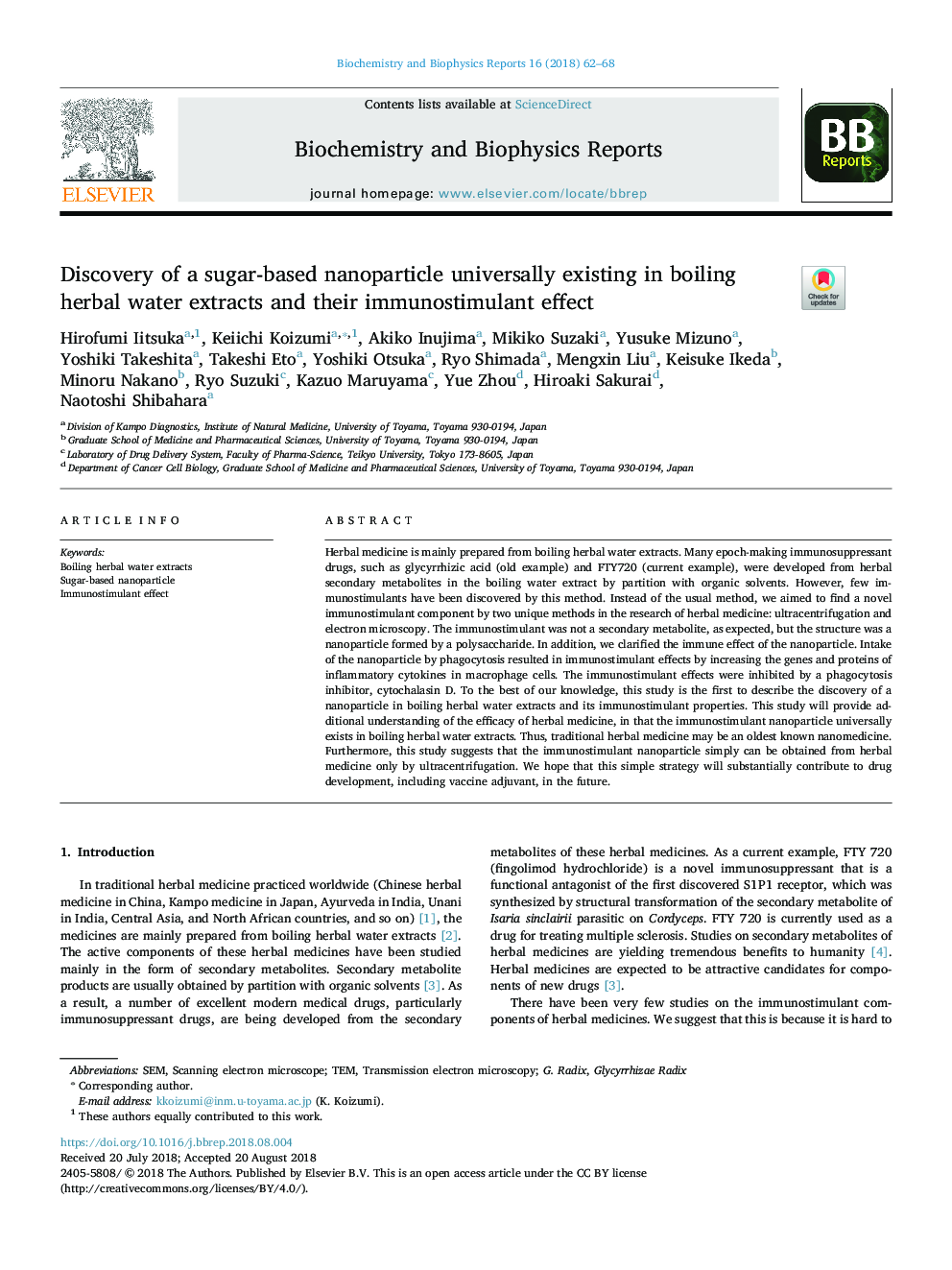| Article ID | Journal | Published Year | Pages | File Type |
|---|---|---|---|---|
| 11029404 | Biochemistry and Biophysics Reports | 2018 | 7 Pages |
Abstract
Herbal medicine is mainly prepared from boiling herbal water extracts. Many epoch-making immunosuppressant drugs, such as glycyrrhizic acid (old example) and FTY720 (current example), were developed from herbal secondary metabolites in the boiling water extract by partition with organic solvents. However, few immunostimulants have been discovered by this method. Instead of the usual method, we aimed to find a novel immunostimulant component by two unique methods in the research of herbal medicine: ultracentrifugation and electron microscopy. The immunostimulant was not a secondary metabolite, as expected, but the structure was a nanoparticle formed by a polysaccharide. In addition, we clarified the immune effect of the nanoparticle. Intake of the nanoparticle by phagocytosis resulted in immunostimulant effects by increasing the genes and proteins of inflammatory cytokines in macrophage cells. The immunostimulant effects were inhibited by a phagocytosis inhibitor, cytochalasin D. To the best of our knowledge, this study is the first to describe the discovery of a nanoparticle in boiling herbal water extracts and its immunostimulant properties. This study will provide additional understanding of the efficacy of herbal medicine, in that the immunostimulant nanoparticle universally exists in boiling herbal water extracts. Thus, traditional herbal medicine may be an oldest known nanomedicine. Furthermore, this study suggests that the immunostimulant nanoparticle simply can be obtained from herbal medicine only by ultracentrifugation. We hope that this simple strategy will substantially contribute to drug development, including vaccine adjuvant, in the future.
Related Topics
Life Sciences
Biochemistry, Genetics and Molecular Biology
Biochemistry
Authors
Hirofumi Iitsuka, Keiichi Koizumi, Akiko Inujima, Mikiko Suzaki, Yusuke Mizuno, Yoshiki Takeshita, Takeshi Eto, Yoshiki Otsuka, Ryo Shimada, Mengxin Liu, Keisuke Ikeda, Minoru Nakano, Ryo Suzuki, Kazuo Maruyama, Yue Zhou, Hiroaki Sakurai,
